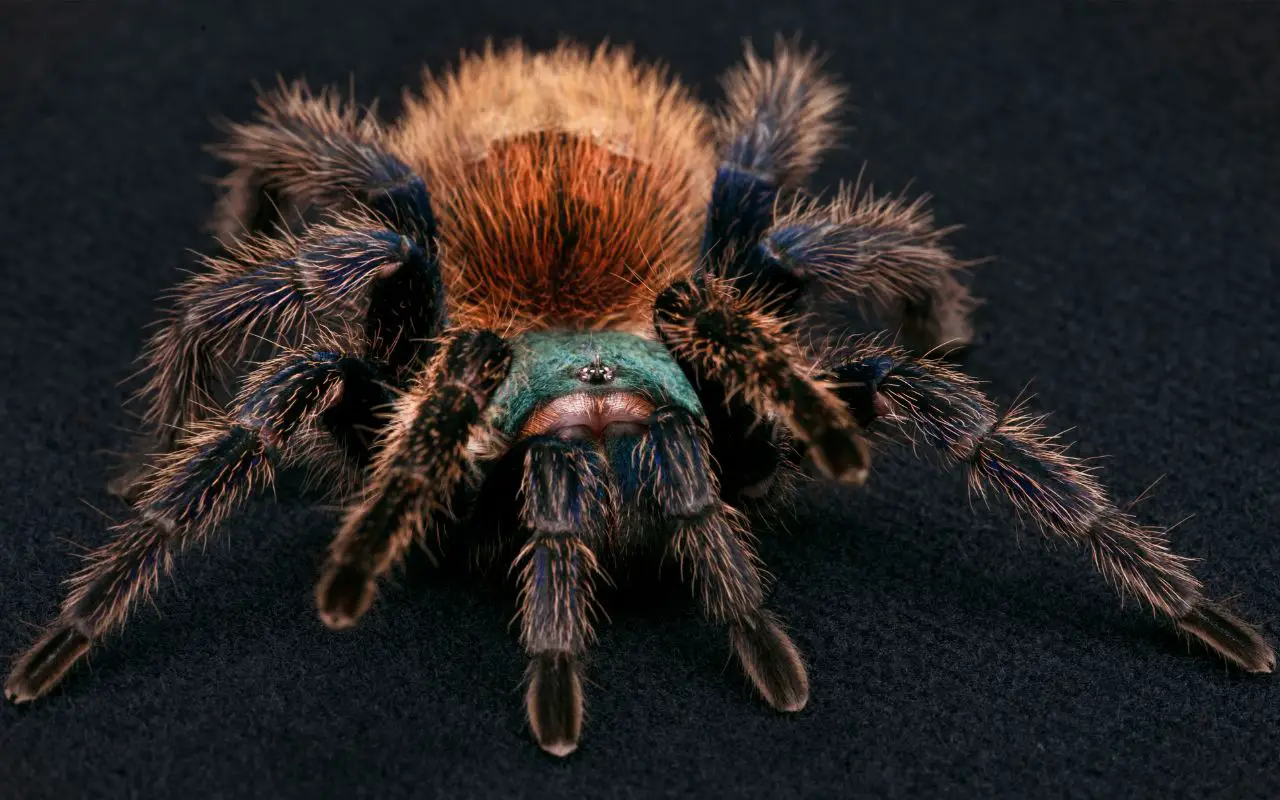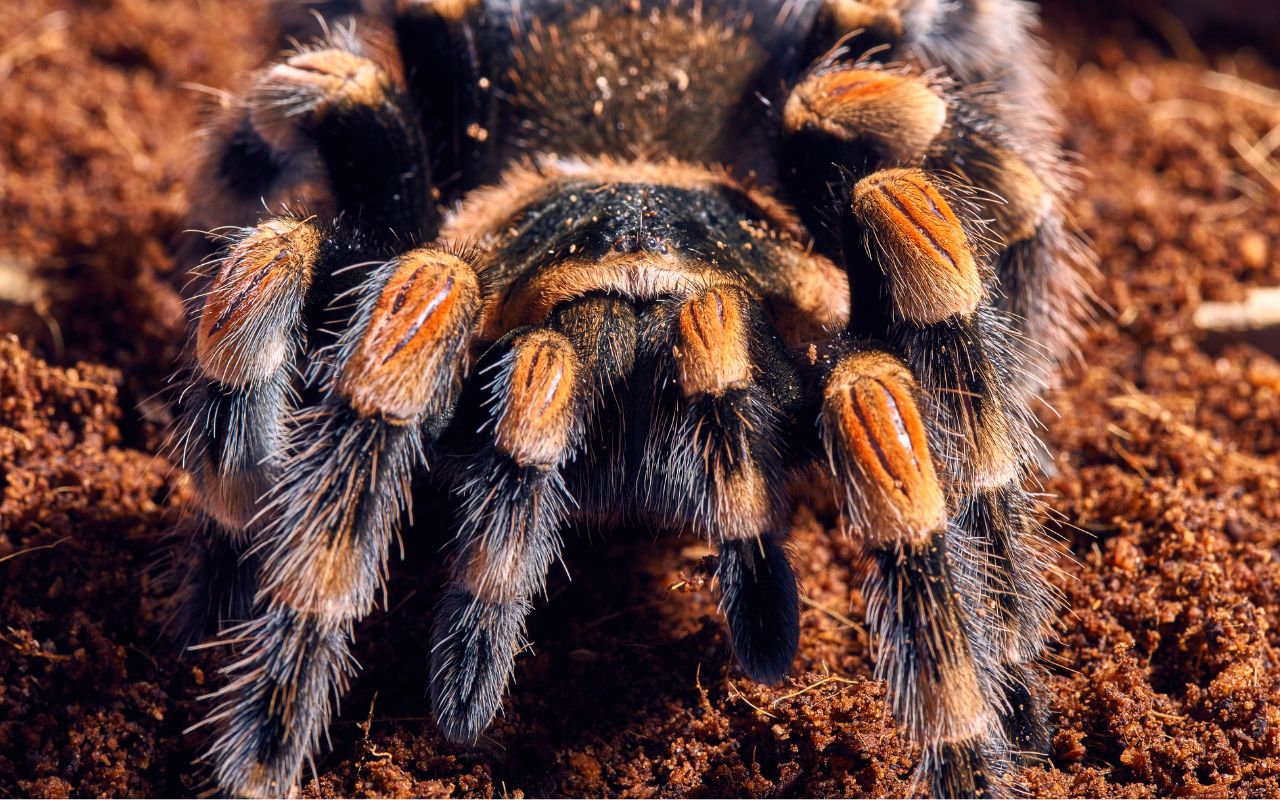If you’re into tarantulas, you’ve already thought about keeping the Goliath Birdeater. After all, it’s literally the largest, heaviest tarantula in the world. How could any self-respecting arachnid lover resist? Trust me, we’re in the same boat: this species was on my bucket list as soon as I had one! That’s why today I’m going to tell you all about how to care for it, based on experience.
Goliath Birdeater care is kind of like that of other terrestrial tarantulas – just on a much bigger scale. They need a larger enclosure, and occasionally some larger prey items than a lot of species. They also need ample room to burrow, and steady humidity. Get these points right, and you’ll have a hardy, long-live pet.
Let’s take a look…
Enclosure Setup and Size
When it comes to the enclosure for your Goliath Birdeater, size and setup play a crucial role. Remember, we’re dealing with the world’s largest tarantula here, capable of reaching almost a foot in leg span!
Hence, I recommend an enclosure with dimensions of around 20″ x 20″ x 20″. As burrowers in their native habitat, these spiders need a good amount of substrate – at least 8-10 inches of it. My preferred mixture is a combination of coconut fiber, peat moss, and a bit of vermiculite to maintain humidity. That said, even coco coir on its own will work well, the main thing is to pick a substrate that holds humidity well.
Here’s a brief list of what you’ll need:
- An enclosure
- Substrate, such as a Josh’s Frogs mix or Eco Earth
- A shallow water dish
- Fake plants (let’s make it look nice for the king of tarantulas, after all!)
- Additional hiding places, like cork bark
Check out the examples of enclosures below:
Goliath Birdeater Humidity
When I initially started caring for my Goliath, I quickly realized that humidity control was going to be key. These spiders hail from the tropical rainforests of South America, so replicating that environment is paramount.
Maintain a humidity level of about 70-80%. To achieve this, I often mist the enclosure and try to keep the substrate just slightly damp.
Goliath Birdeater Temperature
To mimic their natural habitat, keep the temperature in the range of 75 to 85 degrees Fahrenheit. I use a heat mat on one side of the enclosure, providing a warmer side for my tarantula to retreat to if it wishes.
Remember, this heat mat should never be mounted underneath the enclosure. Doing so could dry out your tarantula and kill it very quickly.
If you’re lucky enough to live somewhere where the ambient temperature never drops below 75F, don’t worry about providing additional heating.
Goliath Birdeater Temperament
The Goliath Birdeater is often mischaracterized as a dangerous monster. In reality, they are relatively docile and prefer to retreat rather than confront. That said, they are known to flick urticating hairs when threatened – a common defense mechanism among many tarantulas. From my experience, patience and slow movements are key when interacting with them.
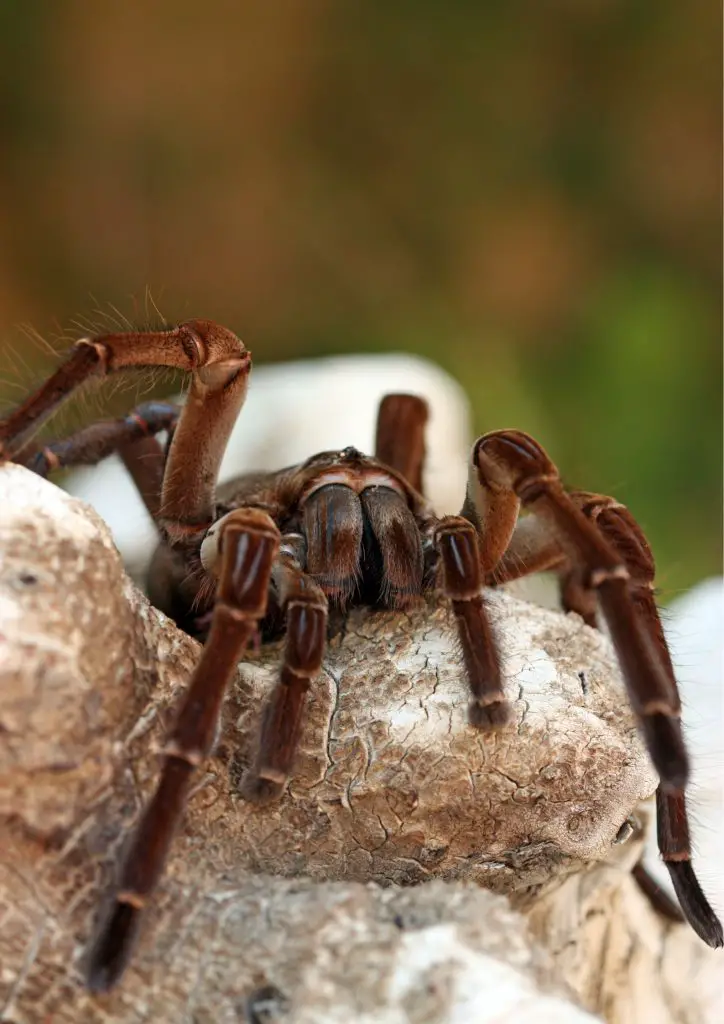
Diet and Feeding
One of my favorite things about owning a Goliath Birdeater is feeding time! These hefty eaters have a voracious appetite. Here’s a typical diet schedule that I use for my spider:
| Week 1 | Week 2 | Week 3 | Week 4 |
|---|---|---|---|
| Crickets (3-4) | Mealworms (5-6) | Pinky mouse (1) | No food |
Remember to adjust the schedule as per your tarantula’s needs. Goliaths also tend to fast before molting, so don’t be alarmed if they refuse food during such periods.
Obviously, I include Pinkie mice because they are packed with protein and fat, and this species has a large body mass to maintain. You do not have to provide them though – and there are other high-protein options you can use to mix things up. They include:
- Locusts
- Hornworms
- Dubia Roaches
Common Health Issues
Keeping a Goliath Birdeater healthy can be a challenging task. Common issues include dehydration, fungal and bacterial infections, and injuries from unsuccessful molting. Regular monitoring, ensuring optimal enclosure conditions, and providing a balanced diet are essential to prevent these health problems.
Something I always remind people of when writing care sheets is the number one killer of pet spiders is dehydration. When trying to keep your tarantula healthy, humidity should always be the first thing you check.
Goliath Birdeater Lifespan
Females typically live for 15 to 25 years – a commitment not to be taken lightly. Males, on the other hand, live for about 3 to 6 years. Caring for my Goliath has truly been a long-term endeavor, but seeing it thrive over the years has made the journey worthwhile.
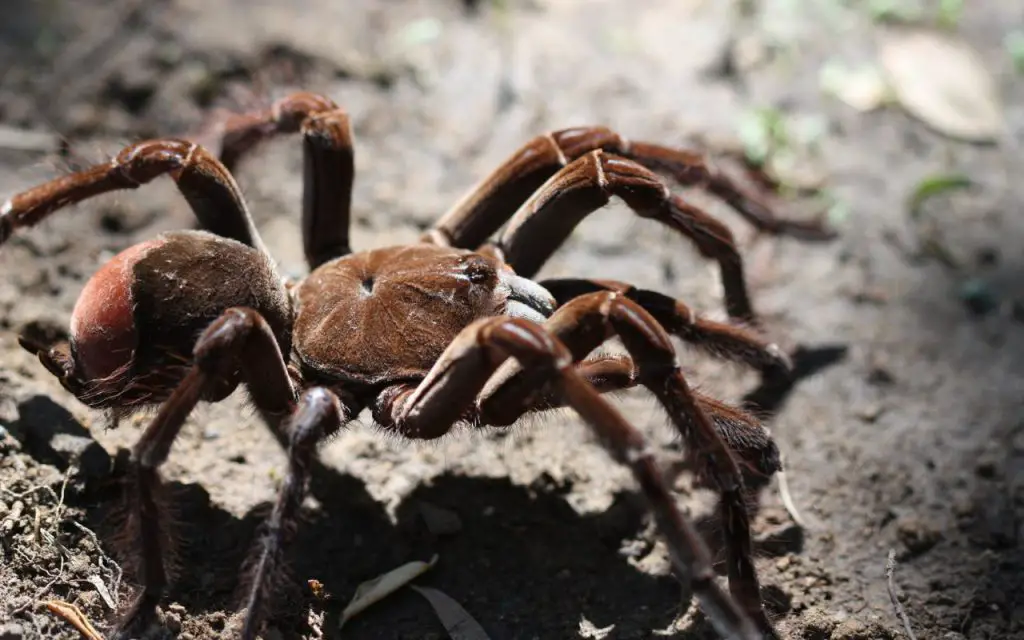
Goliath Birdeater Bite
A Goliath Birdeater’s bite, while not deadly, can be quite painful due to their large fangs. Being the largest tarantula in the world, they’re going to do at least some damage.
It’s comparable to a wasp sting but can be more severe due to potential mechanical damage. Always be respectful of your tarantula’s space to avoid such incidents.
Can a Goliath Birdeater Kill You?
The answer is no. A bite can be painful, and their urticating hairs can cause irritation, especially if they get into your eyes or respiratory system, but they are not lethal to humans. Tarantulas are more scared of us than we are of them!
Goliath Birdeater for Sale
As an arachnid hobbyist, I always emphasize purchasing from reputable breeders. Prices can range from $100 to over $200 depending on the size and sex of the spider. Ensure you’re ready for the long-term commitment that comes with owning one of these magnificent creatures.
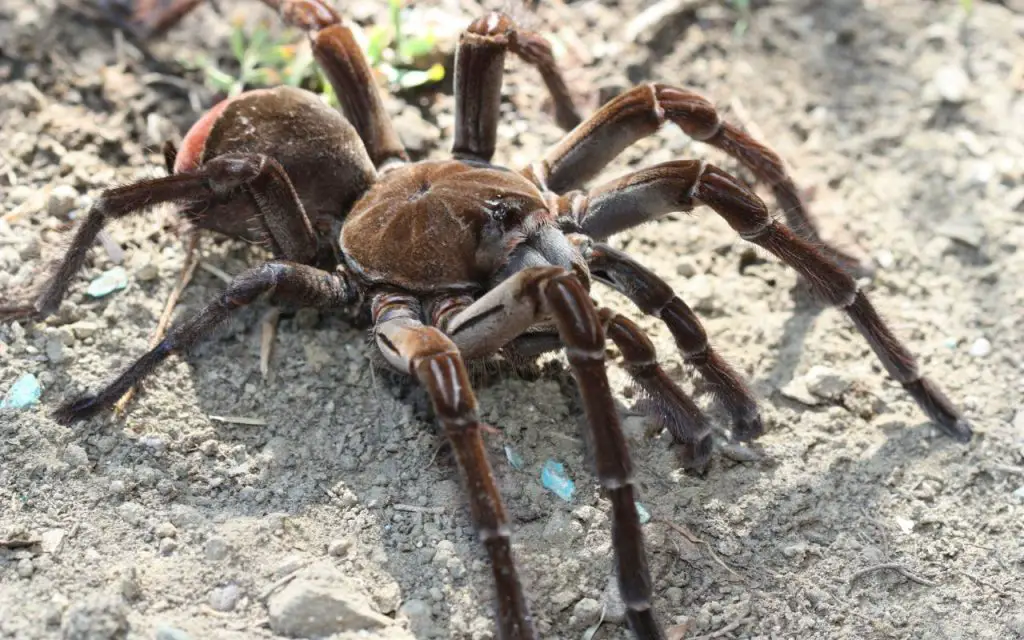
Goliath Birdeater Care: Final Thoughts…
Why I like this species:
- The incredible size of these spiders is amazing to see in real life
- They are docile, and long-lived
Things to consider before getting one:
- They love to burrow, and you might not see your pet for days on end
- Their color is admittedly very drab compared to some species
Owning a Goliath Birdeater is not just about having a pet; it’s about preserving and respecting a small part of our planet’s magnificent biodiversity. As a hobbyist, it’s our duty to provide the best possible care for these creatures. They are not toys or novelties but living creatures deserving of our respect and care.
While they require considerable commitment and care, the rewards are significant. Watching these majestic spiders grow, molt, and thrive is truly an experience to cherish. I wouldn’t trade my time with my Goliath Birdeater for anything – it’s been an arachnid adventure of gigantic proportions!

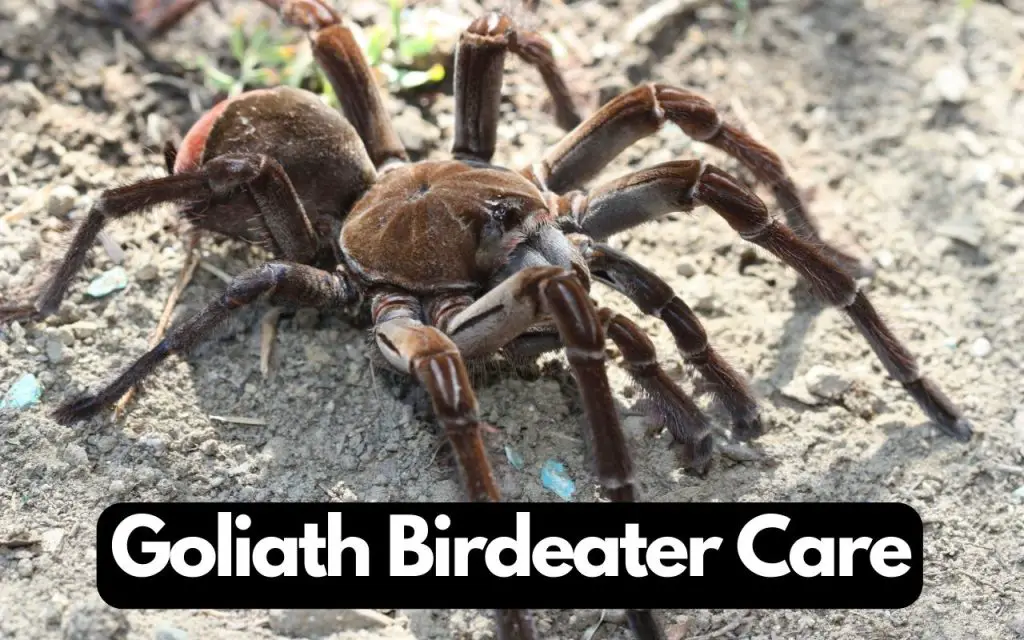
 Repti Zoo 24x18x18 inch glass terrarium
Repti Zoo 24x18x18 inch glass terrarium Exo Terra 24 x 18 x18 inch glass terrarium
Exo Terra 24 x 18 x18 inch glass terrarium
